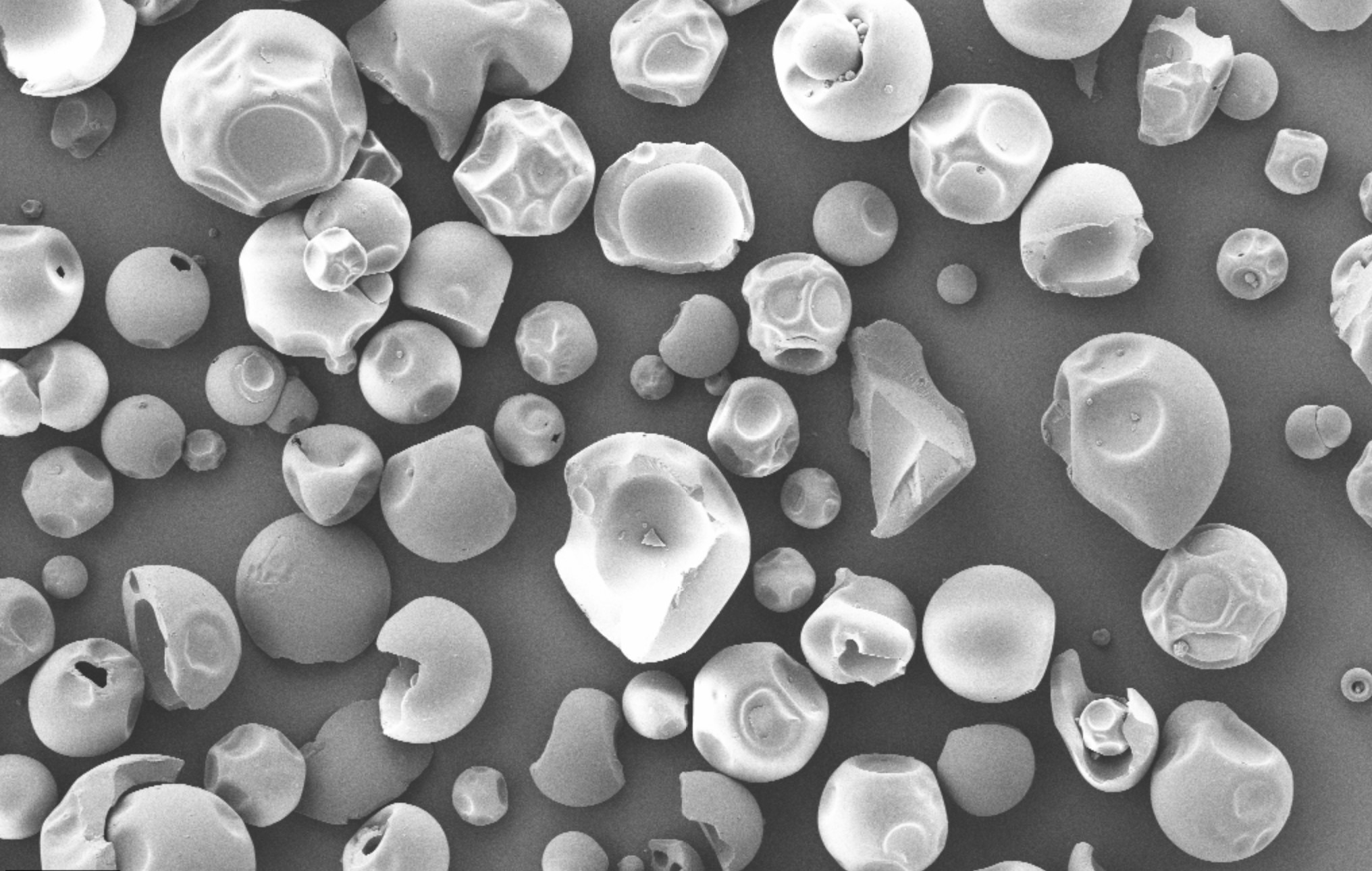Scanning Electron Microscopy (SEM)

Slide
Popularly used for:
- Determination of number particle size distribution of small particles
- Statistical evaluation of Particle shape, e.g. aspect ratio (ratio between breadth and length), gives valuable extra information complementary to laser diffraction about particle characteristics.
- Observation and identification of foreign particles in the sample (pollution). USe elemental analysis by EDX to confirm Suspicion of corruption by foreign particles
- Cryo SEM for globule size
- Search evidence of crystallisation in amorphous materials
- Reverse engineering
- Observe surfaces, pores, and other small features of submicron- and nanostructure of particles
- Obtain elemental mapping of the sample; this can help identify particles of API in the matrix of excipients.
For Material Experts: Instrument and measuring principle
Particle Analytical applies a Scanning Electron Microscope equipped with detectors for Secondary Electrons and Backscatter Electrons. The backscatter detector designed to analyse for differences in molecular density. With the backscatter detector, it is possible to visualise, e.g. compositional density differences in a granule or tablet.
| Instrument | Scanning Electron Microscope |
| USP/Ph. Eur. | USP 1181/ Ph.Eur. 2.9.52 (non-GMP) |
| Sample requirement | The substance or the object must be coated with conducting material (e.g. Au or C) to conduct electrons (sputter-coating). The sample must be dry. |
| Sample amount | A few mg |
| Result | Images of the compound at different magnifications |



